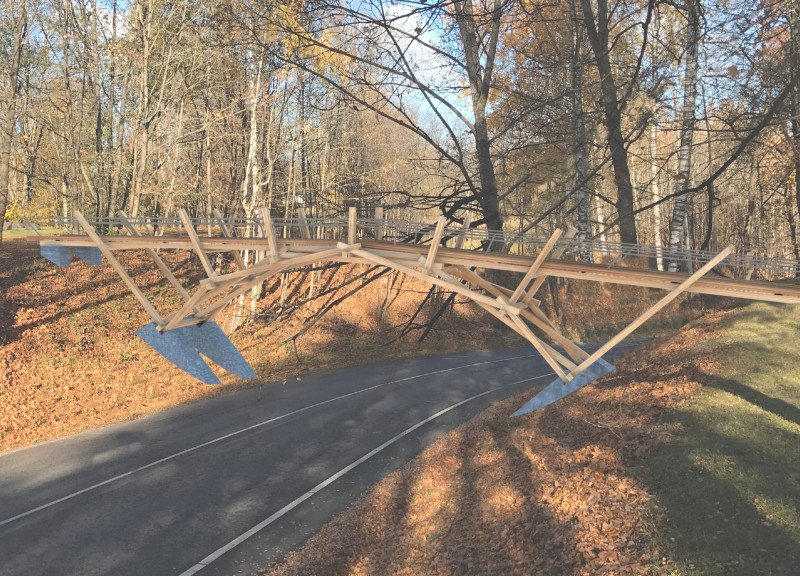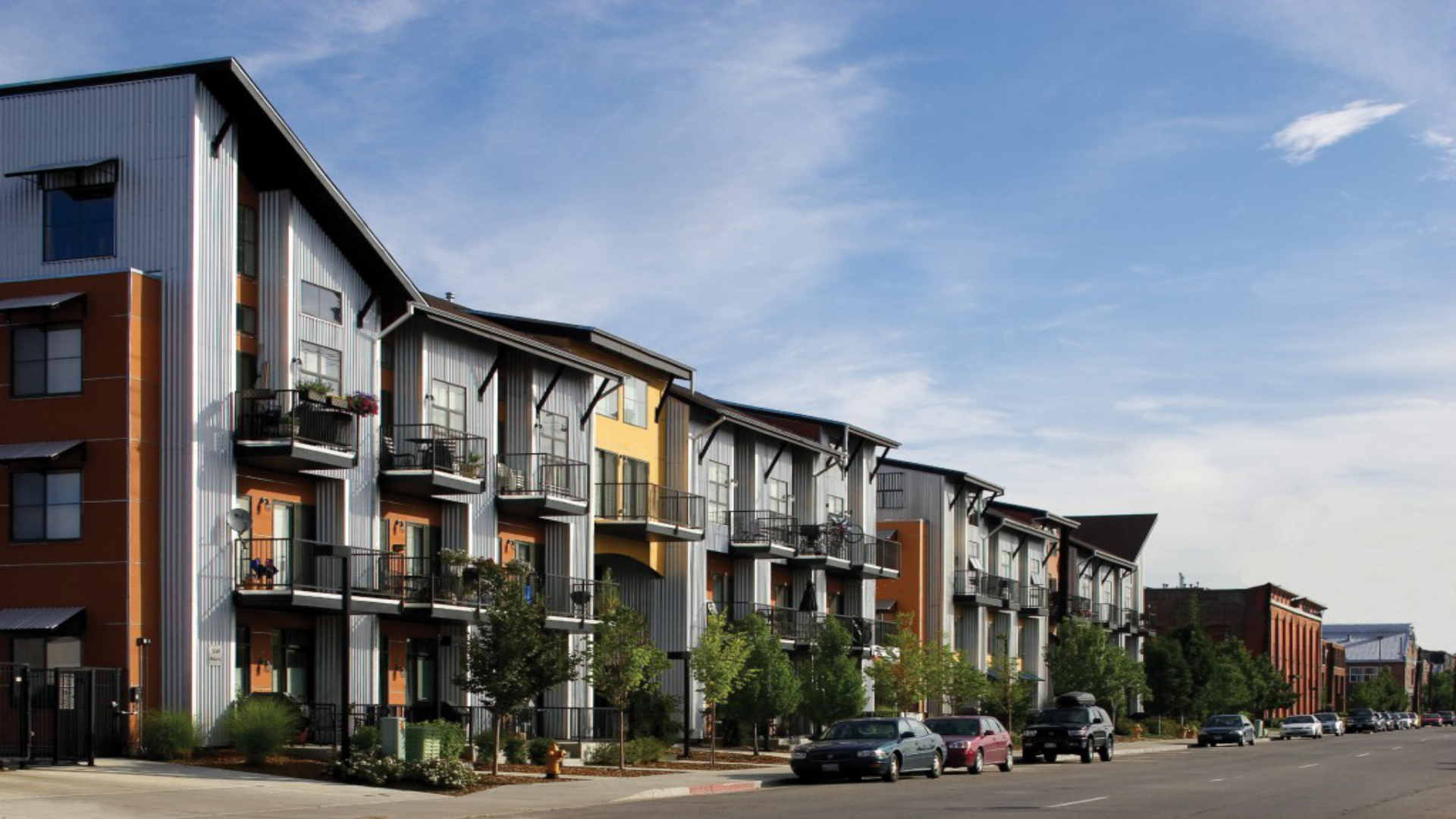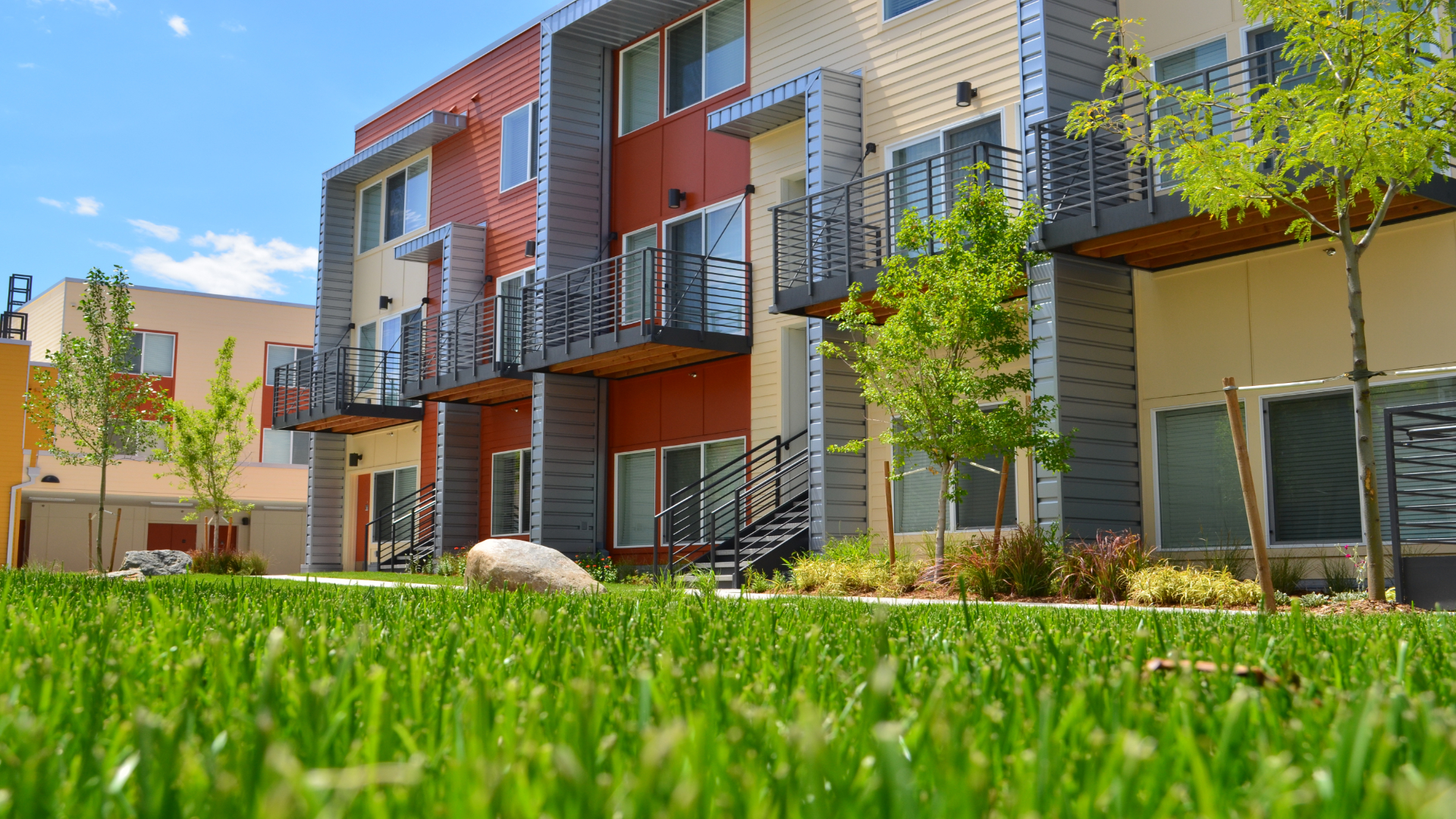5 key facts about this project
The Da Vinci Bridge project is located at the intersection of Jāņa Poruka iela, Baznīcas iela, and Gaujas iela. It serves multiple functions: providing a connection for vehicles and pedestrians while becoming a distinctive landmark in the area. The design balances functionality with a focus on aesthetics, taking careful consideration of the surrounding urban environment.
Design Concept
The overall concept emphasizes practicality and durability. The bridge is built to handle a variety of weather conditions, such as heat, cold, rain, snow, and wind. This durability is essential for ensuring the structure remains functional throughout different seasons. It is designed to allow for smooth and safe movement of both pedestrians and vehicles, addressing the needs of the community while prioritizing accessibility and safety.
Materials
Concrete is utilized for the foundations, delivering the necessary strength and stability. On top of this robust base, oak beams, measuring 20 x 20 cm and 100 x 150 mm, contribute to the bridge’s warmth and texture. These materials not only serve a structural purpose but also enhance the visual quality of the design. Stainless threaded rods with nuts M20 create secure connections throughout, ensuring the overall integrity of the bridge. Safety is further reinforced with stainless railings that have a diameter of 50 mm, accompanied by handrails at two different heights for better usability.
Community Engagement
An important feature of the bridge is an informational stand related to Gauja National Park. This element brings educational opportunities into the design, helping visitors learn more about the natural environment. The project aims to foster a connection between the users and the surrounding landscape. By integrating community engagement into the design, the bridge seeks to address not just transportation needs but also encourage interaction and awareness of local ecology.
Access and Mobility
The bridge is designed with accessibility in mind. Features are included to help individuals with mobility challenges, ensuring everyone can experience the space. This thoughtful approach emphasizes the importance of making public infrastructure usable for all. Balancing practical needs with an inviting design creates a communal space that enhances the experience of everyone who crosses the bridge.
The bridge stands firm, its thoughtful design details contributing to both its functionality and visual identity, inviting people to move through and connect with their urban surroundings.























































